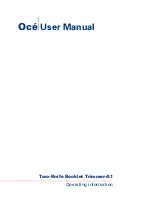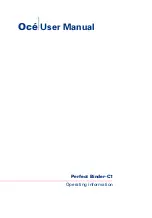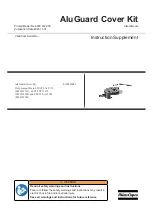
4.
Earthing of the workpiece
-
If necessary, establish an earth connection using suitable capacitors.
5.
Shield, if necessary
-
Shield other devices nearby
-
Shield the entire welding installation
EMF measures
Electromagnetic fields may pose as yet unknown risks to health:
-
Effects on the health of persons in the vicinity, e.g. those with pacemakers and hear-
ing aids
-
Individuals with pacemakers must seek advice from their doctor before approaching
the device or any welding that is in progress
-
For safety reasons, maintain as large a distance as possible between the welding
power-leads and the head/torso of the welder
-
Do not carry welding power-leads and hosepacks over the shoulders or wind them
around any part of the body
Specific hazards
Keep hands, hair, clothing and tools away from moving parts. For example:
-
Fans
-
Cogs
-
Rollers
-
Shafts
-
Wirespools and welding wires
Do not reach into the rotating cogs of the wire drive or into rotating drive components.
Covers and side panels may only be opened/removed while maintenance or repair work
is being carried out.
During operation
-
Ensure that all covers are closed and all side panels are fitted properly.
-
Keep all covers and side panels closed.
The welding wire emerging from the welding torch poses a high risk of injury (piercing of
the hand, injuries to the face and eyes, etc.).
Therefore, always keep the welding torch away from the body (devices with wirefeeder)
and wear suitable protective goggles.
Never touch the workpiece during or after welding - risk of burns.
Slag can jump off cooling workpieces. The specified protective equipment must therefore
also be worn when reworking workpieces, and steps must be taken to ensure that other
people are also adequately protected.
Welding torches and other parts with a high operating temperature must be allowed to
cool down before handling.
Special provisions apply in areas at risk of fire or explosion
- observe relevant national and international regulations.
Power sources for work in areas with increased electric risk (e.g. near boilers) must carry
the "Safety" sign. However, the power source must not be located in such areas.
Risk of scalding from escaping coolant. Switch off cooling unit before disconnecting
coolant flow or return lines.
Observe the information on the coolant safety data sheet when handling coolant. The
coolant safety data sheet may be obtained from your service centre or downloaded from
the manufacturer's website.
11
EN
Summary of Contents for CU 1100i
Page 2: ......
Page 16: ...16...
Page 17: ...General information 17...
Page 18: ...18...
Page 26: ...26...
Page 27: ...Connections and mechanical com ponents 27...
Page 28: ...28...
Page 31: ...Installation and commissioning 31...
Page 32: ...32...
Page 45: ...Close the cover on the cooling unit connection 3 45 EN...
Page 46: ...46...
Page 47: ...Troubleshooting 47...
Page 48: ...48...
Page 53: ...Care maintenance and disposal 53...
Page 54: ...54...
Page 70: ...70...
Page 71: ...Technical data 71...
Page 72: ...72...
Page 82: ...82...
Page 83: ...83 EN...












































